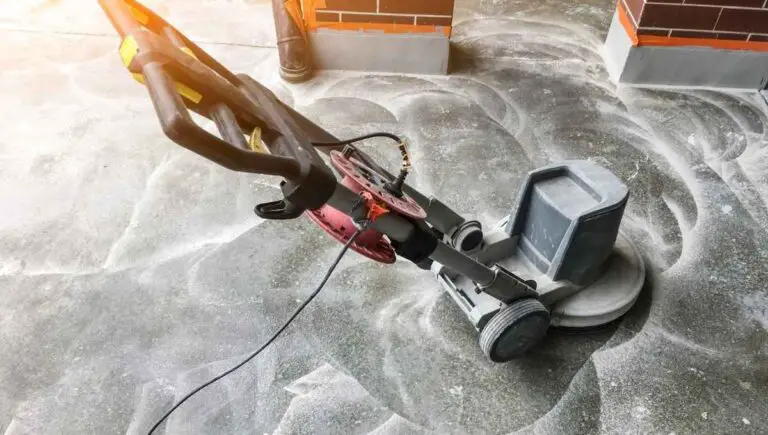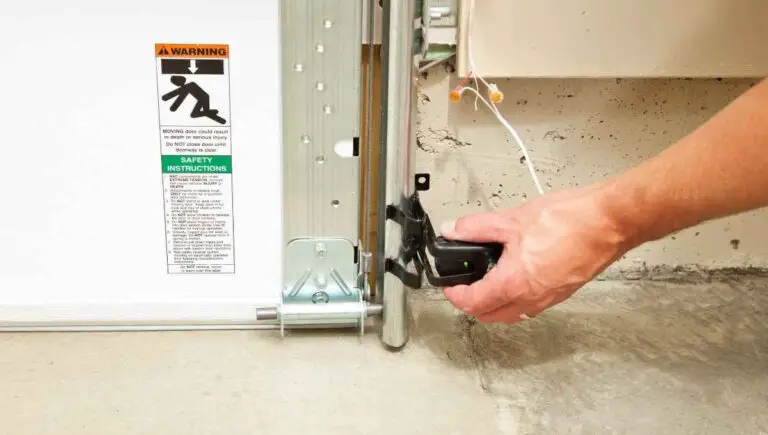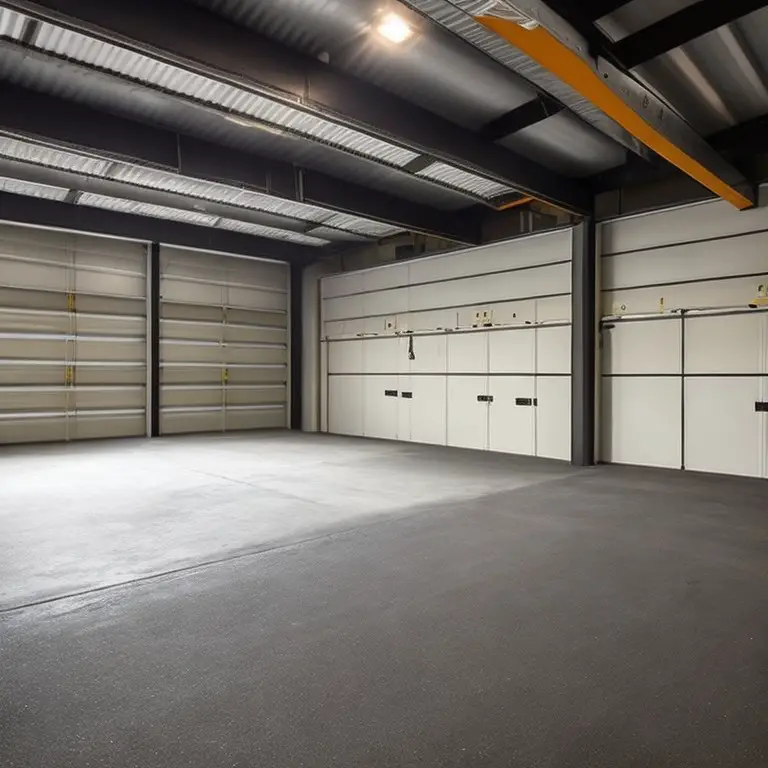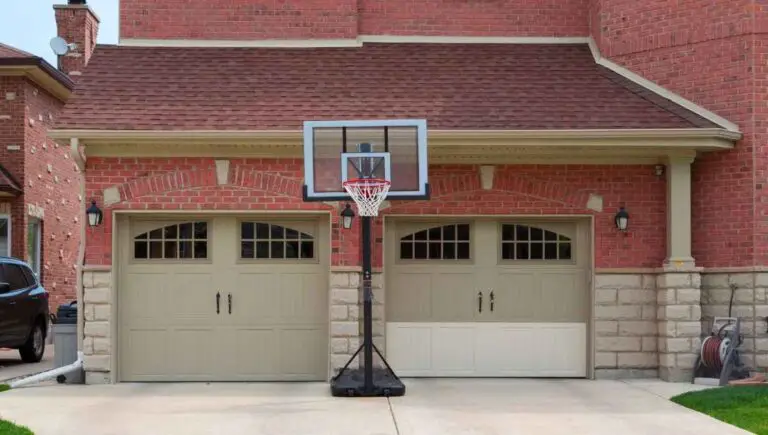Where Does a Garage Floor Drain Go? (Detailed Breakdown!)
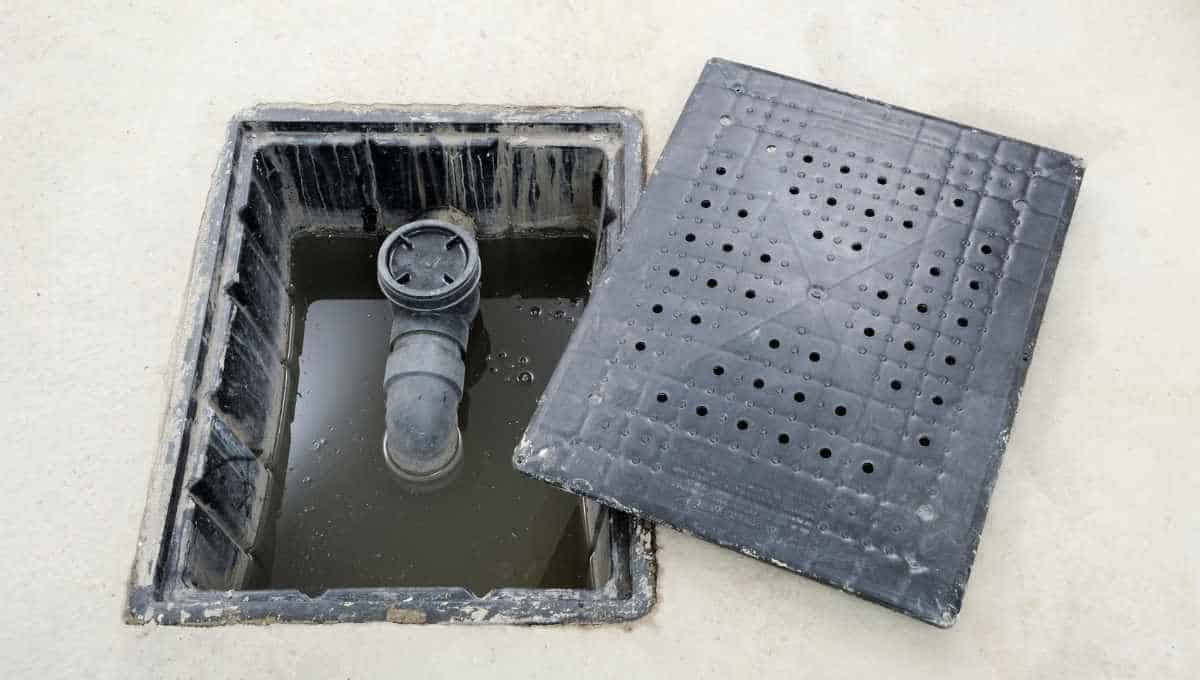
The garage floor drain is a great addition to any garage. This can help with flooding and preventing the accumulation of water in the garage. However, many homeowners may not know where this drainage pipe goes. So, where does a garage floor drain go exactly?
A garage floor drain typically leads to a sewer or in some cases, a sump pit. If the homeowner does not have any other drains leading to another drain or sump pit, then the garage floor drain will go into a sewer.
In this blog post, we are going to go over what you need to know about your garage floor drain(s) as well as the signs that you may need it cleaned.
This post contains affiliate links. This means Household Blogger may earn a commission should you make a purchase using any of our links. Please refer to our full affiliate disclosure policy for full details.
Here’s a Quick Pro Tip!
Upgrade your garage floor drain systems by installing a high-quality floor drain grate. These will help your water drain better, and they are also very easy to clean.
We personally like the NDS 864GMTL 5-Inch Pro Channel Drain Kit, although there are other great options available on Amazon as well.
What are Floor Drains?
Floor drains are great for homeowners that experience standing water or flooding in the garage. However, they do require some upkeep and can lead to problems with pooling water if not used correctly or installed improperly.
When it comes to the floor drain, there are two options for homeowners depending on the space available in your garage.
The first option is a surface mount drain. This type of drain does not need to be mounted below the concrete and is often simply set atop it.
The second option is an in-slab drain. This type of drain must be mounted below the concrete and is more difficult to set up.
If you are interested in a floor drain, it is highly recommended that you hire a professional plumber to install the drainage pipe for you.
Not only will this prevent any problems with construction or installation, but it will also help with the warranty of the floor drain.
Types of Garage Floor Drains
There are many different types of floor drains, but the two most common are surface mounted and in-slab.
Surface Mounted
Surface Mounted is a temporary installation and does not require any special plumbing knowledge to set up. This type of drain installs on top of the garage floor so it can be easily removed and cleaned when necessary.
In-Slab
In-slab must be installed underneath your concrete and is more difficult than your typical setting-on-top option discussed before.
If you’re thinking about installing an in-slab, it’s important to hire a professional plumber for this job for both comfort and warranty.
You might also enjoy our post on If You Can Vacuum Your Garage
How Deep Is a Garage Floor Drain?
On average, the depth of a garage floor drain is 12 inches to 14 inches from the surface of a garage floor up to the end of its pipe. Some garage floor drains can be deeper or shallower than that, depending on the age and manufacturer.
Various factors can increase or decrease the depth of a garage floor drain. As an example, if you have concrete with 4 inches of concrete on top of the gravel, the depth of the drain wouldn’t be 12 inches from the surface.
In some cases, it may be beneficial to add more gravel or use a higher ratio of sand to cement to have the drain be deeper.
Garage floor drains go under the garage floor and range from 8 inches to 3 feet in diameter with a grate cover over them [to prevent people from stepping into them].
They allow the water that gets on the surface of the garage floor to be drained and they also can provide access for maintenance and repair work.
Who Needs a Garage Floor Drain?
Many homeowners do not need a floor drain in their garage. If there is no chance of flooding in the garage (such as due to heavy rain or snowmelt) then a floor drain is not needed.
If you do find yourself with water accumulation in the garage, then it may be time for you to look into installing a garage floor drain.
A great way to determine if your garage needs a floor drain is to look for standing water accumulation. If you have puddles of water in your garage, even after several days, it may be time to install a floor drain.
Does a Garage Need a Floor Drain?
Most garages do not need a floor drain. Drains are only really needed when you experience flooding in the garage or if you have standing water that accumulates even after several days. Common causes of flooding in your garage may be due to heavy rain or snowmelt.
If you feel like your property may benefit from some protection against catastrophic flooding, then it’s best to speak with a professional who can help determine how wide an area needs to be drained and install the appropriate equipment for you.
Here is how you can determine if your garage needs a floor drain:
1. If you see water accumulation in the garage, even after several days, it may be time to install a floor drain.
2. When flooding occurs and causes major damage, it could have been prevented with a proper drainage system installed before the problem occurred.
3. If there are objects on the floor of your garage that you can’t move, then it may be time for you to look into installing a garage floor drain under them to avoid damage in case of flooding or water accumulation.
You might also enjoy our post on Can You Replace Garage Door Window Inserts?
Should I Put a Floor Drain in My Garage?
You should put a floor drain in your garage if you live in an area where flooding is common and the accumulation of water in your garage would ruin your valuables or pose a health hazard.
For example, you should consider putting one in your garage if you live in an area with high amounts of snowfall where the melting water would accumulate and likely flood your garage. It may also be a good idea to do this if you live in an area prone to heavy rainfall.
If you do not know where the drain goes, it is a good idea to ask a plumber about installation and costs before deciding whether or not a floor drain would be beneficial for your garage.
What Are Signs I Need My Floor Drain Cleaned?
A floor drain typically needs to be cleaned if you find excessive amounts of water accumulated around it. This is a sign that the drain has become blocked by debris or grease and will need to be cleaned out.
In some cases, where a floor drain goes to a sewer, it may become clogged due to roots from nearby trees.
If you have a floor drain in your garage and notice that you are acquiring large amounts of water, a plumber can check for any buildup in the drain or in an underground sewer line.
If there is any sort of blockage in either the floor drain(s) or your sewer lines, it may be time to clean them out.
Clean Out Your Floor Drains Regularly
If you have a floor drain in your garage, make sure to clean it out on a regular basis. Not only will this keep your garage dry but it will prevent any debris or dirt from accumulating and clogging the drain.
By doing this, you can avoid having to pay for costly repairs later on that include excavating the drain and cleaning it out by hand.
If you have a floor drain in your garage, be sure to clean it out regularly to avoid any overflows of water or having to pay for any future repairs.
Do Garage Floor Drains Have Traps?
Garage flor drains typically don’t have traps. Their purpose is to simply remove water from the floor of your garage and send it outside.
While garage floor drains typically don’t have a trap, there are other mechanisms to lower the risk for flood damage to your garage. Some of these include:
1. Installing a sump pump in the low point of your garage
2. Make sure to install drain tiles on the perimeter of your garage
3. Install check valves when water is draining toward the floor drains and apply backwater valves where possible to help with flood damage prevention and control and allow for easy maintenance
4. Cover floor drains with a removable access cover
5. Use a professional to work on your drain and sewer lines as they provide the most knowledgeable advice about the proper installation and how to avoid any problems later on.
This is why it is important to clean out your drains regularly, rather than waiting for overflow problems to occur before taking action.
Do Garage Floor Drains Require Trap?
Garage floor drains do not typically require a trap installed with them. However, if you are concerned about water damage, there are other methods that can be used to help prevent this from occurring including:
1. Installing a sump pump in the low point of your garage
2. Make sure to install drain tiles on the perimeter of your garage
3. Install check valves when water is draining toward the floor drains and apply backwater valves where possible to help with flood damage prevention and control and allow for easy maintenance.
If you hear a gurgle or sucking sound coming from your drain lines or if you notice any water accumulating in or around the drain line, it may be time for a professional to take a look and make sure nothing is clogging up your drainage system.
Getting this checked can save you from having to pay for expensive undertakings down the road such as roofing repairs and/or sump pump malfunctions.
When it comes to garage floor drain codes, it is always best to call your local city’s code enforcement office to find out what the neighborhood association requirements are.
These can vary based on where you live and how old your garage is, among other things.
Final Thoughts
Garage floor drains go to either storm sewers or sanitary sewer systems. These drain lines do not require traps, but they may require a sump pump installed at the lowest point of your garage to help with water damage prevention.
It is also important to clean your drains on a regular basis to avoid having to pay for expensive repairs or excavation later on.

